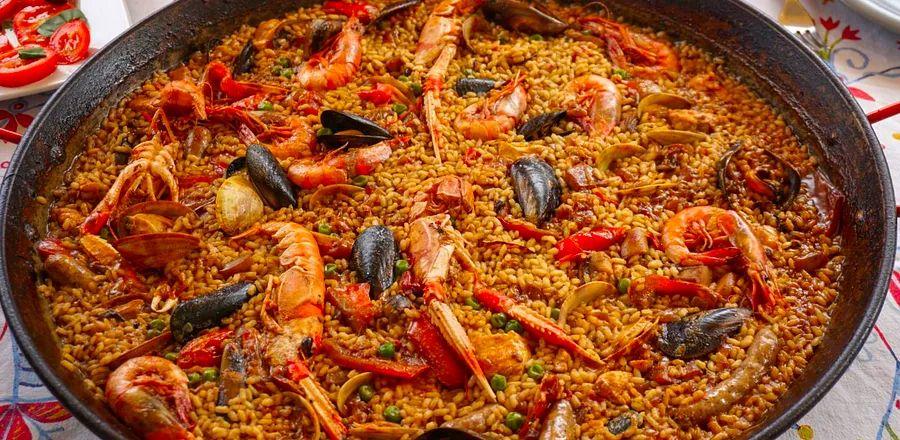12 Must-Try Spanish Dishes and Where to Enjoy Them

During my year in La Rioja in 2019, I discovered that the beauty of Spanish cuisine lies in its simplicity. Moving away from the spice-rich flavors of diverse American cuisines, I learned to appreciate the fresh local ingredients prepared in straightforward ways, all complemented by delicious wine and even better company.
Each of Spain's 17 regions (or comunidades) boasts its own beloved dishes. Stroll through Logrono, the capital of La Rioja, to savor pintxos—the northern take on tapas—featuring garlic-laden mushrooms as the highlight. Alternatively, venture to Galicia in the northwest to taste percebes—goose barnacles known for their unique flavor.
Some regional specialties, like the iconic paella from Valencia, have gained such popularity that they've become emblematic of Spanish cuisine. Others, such as the tortilla, are found in restaurants and homes nationwide.
Regardless of their origins, these 12 Spanish dishes encapsulate flavors shaped by history and geography, making Spain a cherished destination in the culinary world.

Photo by Sandra Wei/Unsplash
1. Paella Valenciana
- Where to enjoy it: Casa Carmela, València
Derived from the Valencian word for “frying pan,” paella is easily recognized by the wide, shallow pan used for cooking. This regional specialty is so beloved that many outside Spain regard it as the quintessential “Spanish dish,” despite its origins as a simple lunchtime meal for farmers in the rice fields of Valencia.
This dish perfectly balances nourishment and flavor: a base of yellow rice, seasoned with saffron, is combined with vegetables. While rabbit and chicken can be used as proteins, it’s more common to find Mediterranean seafood like shrimp, mussels, or scallops on top. The true highlight of any excellent paella, however, is the crispy layer of burnt rice at the bottom, known as soccarat. Scrape it off to add a delightful crunch to the aromatic rice and fresh seafood.

Courtesy of Nacho Carretero Molero/Unsplash
2. Patatas bravas
- Where to taste it: Docamar, Madrid
Dive into the renowned dining and drinking tradition of tapas, and you're likely to encounter this dish. Simple yet satisfying, it features a small plate of fried potatoes generously topped with a red sauce made from smoked Spanish paprika, olive oil, garlic, and occasionally tomato. Despite its name meaning “brave potato,” you don't need a high spice tolerance to enjoy it.

Photo by Thomas Vogel/Unsplash
3. Jamón
- Where to sample it: Restaurante Cinco Jotas, Sevilla
It's nearly impossible to imagine a Spanish meat shop without chunks of cured ham hanging from the ceiling. Jamón is enjoyed everywhere—whether nestled in a sandwich as a bocadillo, atop eggs in a dish known as huevos rotos, or simply on its own—infusing everything with its salty, umami essence. In Spain, there are two primary types of jamón: the more common jamón Serrano, sourced from white pigs, and the pricier jamón Iberico, derived from black pigs.

Photo by Menganos Producciones/Shutterstock
4. Pimientos de Padrón
- Where to savor it: Pulpería Rial, Galicia
Pimientos de Padrón is a popular selection on the tapas menu, featuring green peppers sautéed in olive oil and sprinkled with salt. These peppers hail from Galicia, and there’s even an annual festival in the quaint town of Herbon dedicated to them. Generally, they have a mild flavor with a touch of sweetness, but you might encounter the occasional pepper that brings a surprising kick, turning eating them into a delightful game of chance—making the experience even more enjoyable, right?

Courtesy of blackieshoot/Unsplash
5. Tortilla
- Where to taste it: Bar Nestor, Basque Country
This fluffy blend of eggs and potatoes is quite different from what a Mexican tortilla represents, but in both cultures, the tortilla holds a place of importance in the home. The Spanish tortilla de patatas is prepared by frying thinly sliced potatoes and onions in a generous amount of olive oil before incorporating whisked eggs into the mix. After cooking until mostly set, the frittata-like dish is flipped—often with the help of an extra plate—to finish cooking. This straightforward yet delicious Spanish dish can be enjoyed as a tapa, in a sandwich, or on its own at any time of the day.

Photo by Anastasia Kamysheva/Shutterstock
6. Gazpacho
- Where to savor it: Restaurante El Churrasco, Andalucía
Gazpacho is a revitalizing cold soup enjoyed across Spain during the summer months, originating from the southern region of Andalucía. This dish combines tomatoes, cucumbers, Italian frying peppers, and olive oil into a chilled reddish-pink mixture served cold. It can be enjoyed on its own or topped with garnishes like hard-boiled eggs, chopped ham, or a sprinkle of cumin.

Photo by Julia-Bogdanova/Shutterstock
7. Bacalao
- Where to taste it: Nido Bilbao, Basque Country
Bacalao is arguably Portugal’s most iconic dish, but Spain, its Spanish-speaking neighbor, has also savored its share of salted cod, brought over from the northern waters of Norway and Newfoundland through New World trade. This fish is particularly popular during the Christmas season and can be prepared in countless ways. Notable bacalao dishes from the Basque region include bacalao a la Vizcaína, featuring salted cod in a rich red pepper stew-like sauce, and bacalao al pil-pil, where the cod is served in a thickened olive oil and garlic sauce.

Photo by Nacho Carretero Molero/Unsplash
8. Croquetas
- Where to enjoy it: Santerra, Madrid
There’s much to adore about the croqueta: these deep-fried balls are filled with a luscious béchamel sauce and a variety of ingredients, from salted cod to mushrooms (though jamón and cheese are the most popular fillings). Originally from France, the croqueta found its way to Spain and has become a staple in tapas bars and a favored appetizer in restaurants across the country. Look for a crispy breadcrumb coating wherever you go; that’s the hallmark of a great croqueta.

Photo by Lazhko Svetlana/Shutterstock
9. Morcilla
- Where to taste it: Casa Ojeda, Castilla y León
Blood sausage is a dish found globally, from the United Kingdom to Puerto Rico. Spain offers its own regional variations. For instance, in Andalucía, spices like cinnamon and cloves are used, while in Asturias, the sausage is notably smoke-dried. The morcilla from the Castile and León region, especially famous from its capital Burgos, is particularly noteworthy for being meatless. Instead, it combines pork blood and lard with onion, rice, and a mix of spices.

Photo by nito/Shutterstock
10. Pan con tomate
- Where to enjoy it: Any local bar or café
I understand—bread and tomato might not seem like a must-try dish when visiting Spain. However, much like the beloved tomato sandwich in the U.S. South, pan con tomate is a simple (and often overlooked) dish that highlights the brilliance of a ripe tomato. This delightful combination features toasted bread topped with freshly grated tomatoes, drizzled with olive oil, and seasoned with salt. Due to its easy preparation, pan con tomate is a popular breakfast option, typically enjoyed alongside a morning espresso.

Photo by Civil/Shutterstock
11. Gambas al ajillo
- Where to taste it: La Casa del Abuelo, Madrid
This Spanish delicacy combines shrimp and garlic in an ajillo sauce made from olive oil, paprika, lemon juice, and parsley. All the ingredients are sautéed in a skillet, resulting in a tantalizingly fragrant dish that can be enjoyed as a tapa or ordered in a larger serving. Thankfully, bread typically accompanies the shrimp, perfect for soaking up all that delicious garlicky flavor.

Courtesy of Oscar Nord/Unsplash
12. Churros
- Where to savor it: Churrería Laietana, Catalonia
The precise origin of the churro is somewhat unclear. Some suggest that this treat was inspired by China's youtiao, while others believe that Spanish shepherds invented it as a substitute for baked goods. Regardless, churros are now enjoyed globally, from Latin American dessert shops to county fairs in the United States. Spanish churros typically take the form of sticks or loops and can be coated in sugar or enjoyed plain. They are often paired with hot dipping chocolate, a delicious result of 16th-century explorations that introduced Aztec chocolate to the Iberian Peninsula.
Evaluation :
5/5



